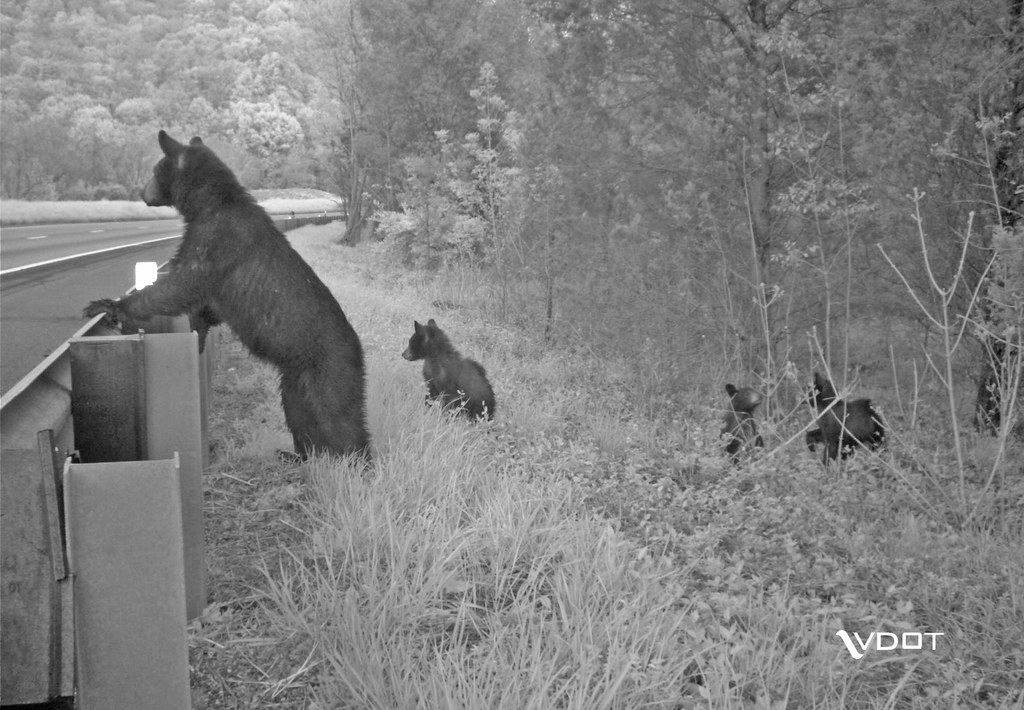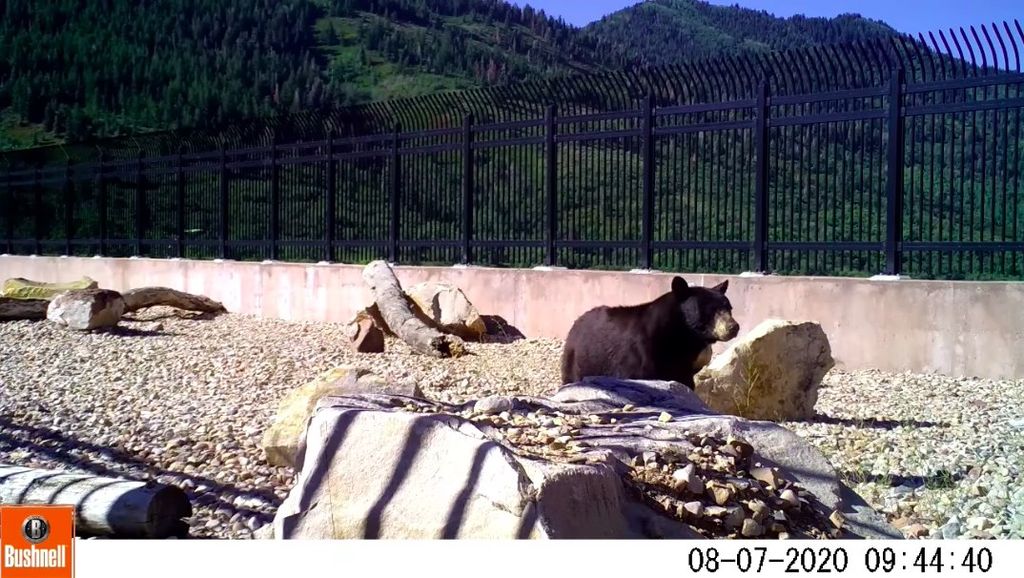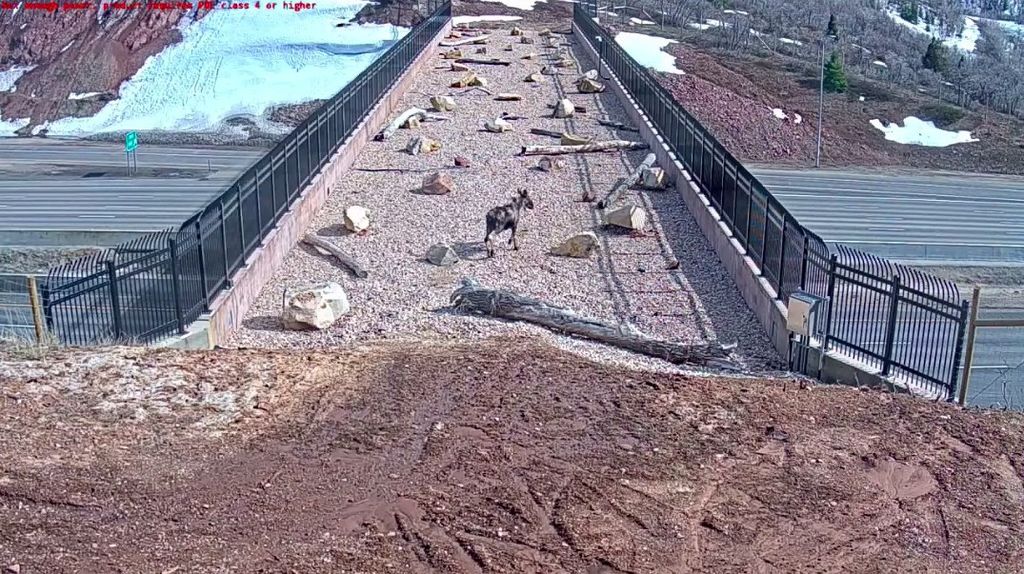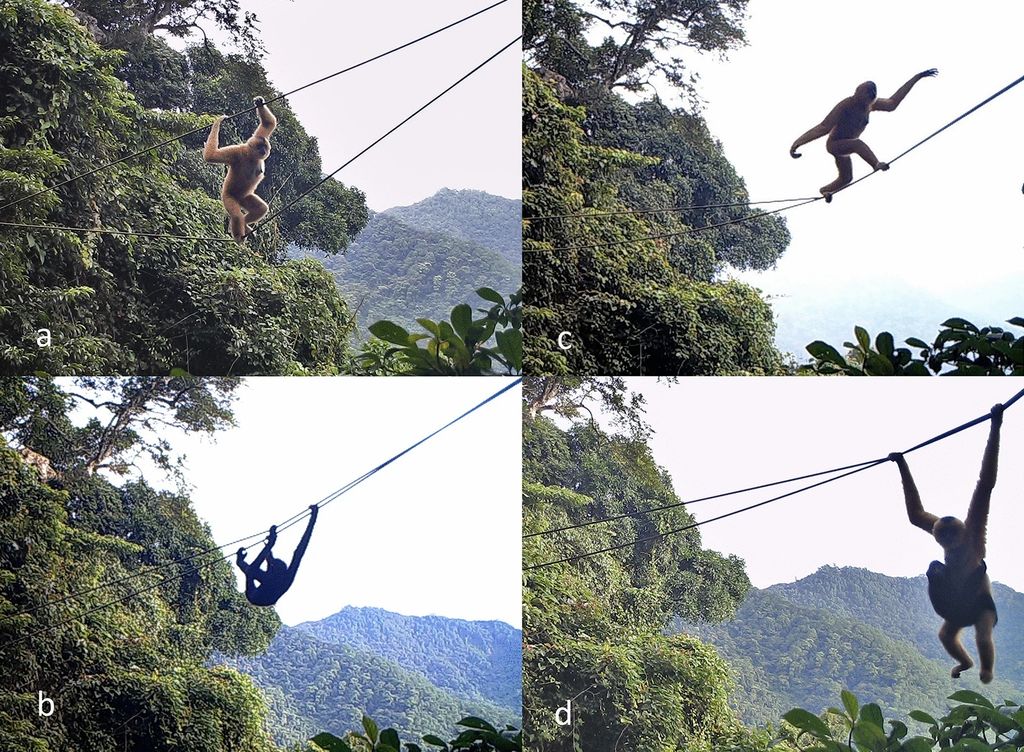As humans take over more and more of the planet, animals who normally travel over large areas are struggling to survive. One way of helping these animals is to create bridges and tunnels to help them cross dangerous roads.
Many animals need to move across large distances. Often they do this as part of their natural migration. Sometimes animals need to move to a new area when food gets low or conditions get worse.

(Source: Virginia Department of Transportatio, via Flickr.com.)
Humans have taken over huge areas of the planet with cities, towns, malls, factory areas, and farms. Roads and highways cut up the remaining natural areas into many small sections, making it dangerous for animals to move from even one small wild area to another.
Many people are working to help animals by creating “wildlife corridors” – trying to reconnect smaller natural areas so that animals can move over larger areas. One important step in creating these corridors is building wildlife bridges and tunnels to give animals a way to safely cross dangerous roads.

(Source: UDOT/Utah Division of Wildlife Resources.)
These changes don’t just help animals, they save human lives, too, by avoiding accidents. In the US alone, there are nearly 40,000 accidents every year caused by cars and trucks hitting wildlife.
Here are a few examples of wildlife crossings:
A Bridge Over a Busy Highway in Utah
In 2018, Utah built a wildlife bridge over the busy highway I-80. A 3-mile (4.8 kilometer) fence was created to help guide animals to the bridge. Normally, animals take a long time to discover and begin using wildlife bridges, so experts didn’t expect the bridge to get much traffic for several years.

(Source: UDOT/Utah Division of Wildlife Resources.)
But recently, the state has released a video showing that many different kinds of animals are already using the bridge.
An ‘Eco-Bridge’ in Uttarakhand, India
In Uttarakhand state in India, the forest department has built a special “eco-bridge”, made from all-natural materials. The bridge is 90 feet (27.5 meters) long and runs over one of the busiest highways in the area.
In Uttarakhand state in India, the forest department has built a special “eco-bridge”, made from all-natural materials. Already, the bridge has gotten a lot of attention, with many people taking selfies in front of it. Below, a Twitter post about the bridge.
😕
This tweet has not been loaded because of your cookie choices. To view the content, you can accept 'Non-necessary' cookies.
Though the bridge is high in the trees, forest department workers hope the bridge will help smaller animals on the ground, too, by reminding drivers that they’re in an important natural area with lots of wildlife. Already, the bridge has gotten a lot of attention, with many people taking selfies in front of it.
A Rope Bridge to Help Endangered Gibbons in China
On China’s Hainan island in 2015, scientists created a bridge for gibbons in order to solve a problem that had nothing to do with humans. Hainan gibbons – the world’s most endangered primates – normally cross the forest by swinging high in the trees.
But after a 2014 typhoon, landslides caused huge gaps in the forest, which were forcing the gibbons to make dangerous jumps. Scientists created a simple and cheap rope bridge, which solved the problem.

(Source: Kadoorie Farm and Botanic Garden [CC BY 4.0], via Nature.com.)
Now people in other countries are looking to try similar ideas. In Brazil, for example, scientists want to create bridges to help animals cross the hundreds of miles of highway that cut through the Amazon Rainforest.
Did You Know…?
The Phil Hardberger Park in San Antonio, Texas, recently opened what they say is the largest wildlife bridge in the US. This bridge, unlike the others in this article, was built for use by both animals and humans. The park says they have already seen deer using the bridge.
